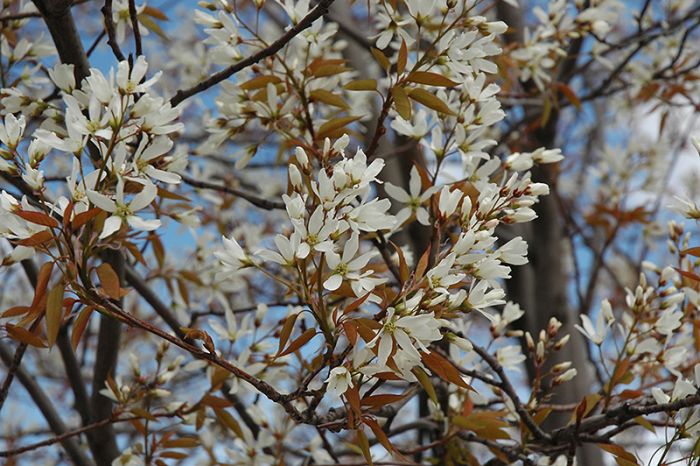Top Ten Trees for Minnesota
Sean's Top Ten Trees for Minnesota!



One of the loveliest small trees for Minnesota. Clouds of white blossoms in May, sweet, edible fruits are bird magnets, blue-green leaves with brilliant red fall color and attractive gray bark. Foundation, accent, border, or screen plant.
At Minnesota's Destination Garden Center, we offer a diverse range of trees to suit any landscaping need. Whether you're looking for shade trees to cool your home or ornamental trees to add beauty and interest, you'll find the perfect tree at Gertens. Our knowledgeable staff can help you select the right tree for your space and provide tips for care and maintenance. Visit Gertens today and explore the unmatched variety of trees to enhance your outdoor environment!
Autumn Brilliance® Serviceberry | Amelanchier x grandiflora 'Autumn Brilliance'
Height: 25 feet
Spread: 18 feet
Sunlight: full sun to part shade
Hardiness Zone: 4a
Description:
A great multi-stemed small tree prized for its abundance of showy white flowers in spring and consistently beautiful fall colors; a great three-season shade tree for small landscapes
Ornamental Features
Autumn Brilliance® Serviceberry is covered in stunning clusters of white flowers rising above the foliage in early spring before the leaves. It has dark green deciduous foliage. The oval leaves turn an outstanding brick red in the fall. It produces blue berries in late spring. The smooth gray bark adds an interesting dimension to the landscape.
Landscape Attributes
Autumn Brilliance® Serviceberry is an open multi-stemmed deciduous tree with a more or less rounded form. Its relatively fine texture sets it apart from other landscape plants with less refined foliage.
This tree will require occasional maintenance and upkeep, and is best pruned in late winter once the threat of extreme cold has passed. It is a good choice for attracting birds to your yard, but is not particularly attractive to deer who tend to leave it alone in favor of tastier treats. It has no significant negative characteristics.
Autumn Brilliance® Serviceberry is recommended for the following landscape applications;
Planting & Growing
Autumn Brilliance® Serviceberry will grow to be about 25 feet tall at maturity, with a spread of 18 feet. It has a low canopy with a typical clearance of 4 feet from the ground, and is suitable for planting under power lines. It grows at a medium rate, and under ideal conditions can be expected to live for 40 years or more.
This tree does best in full sun to partial shade. It prefers to grow in average to moist conditions, and shouldn't be allowed to dry out. It is not particular as to soil type or pH. It is somewhat tolerant of urban pollution. This particular variety is an interspecific hybrid.
| Weight | 1.000000 |
|---|---|
| Gerten Grown Plants | Gerten Grown Plants |
| Available for Pre-Order | Yes |
| Tree Type | Shade & Ornamental |
| Sun Preference | Full-Sun, Part-Sun |
| Mature Height (Range) | 15 - 25 feet, 25 - 50 feet |
| USDA Hardiness Zone | 4, 5, 6, 7, 8 |
| Common Family Name | Serviceberry |